Meet a Maker Episode 2: Amie DD
Welcome to the Electromaker Meet a Maker podcast! For this episode, host and Electromaker Senior Editor/Social Media Manager Moe Long sits down with self-professed magical unicorn software engineer Amie DD (Amie Double D) and talks maker communities, cosplay, LEGOS, movies, and more! Her awesome projects include a Princess Hilda LED staff, light up cosplay sword, LEGO interactive wall.
Electromaker.io: Hey Amie! Thanks for joining. I'm actually a huge fan of a number of the games you worked on at Marvel including "Marvel Superhero Squad: The Infinity Gauntlet." So tell me a little bit about your day job.
Amie DD: I worked on the first "Thor" game ["Thor: God of Thunder"]. I worked on the physics calculations for the cape. Because in computers and stuff like that, stuff that is very computationally expensive to render, I always like it when you say "computationally expensive," people are like "what do you mean expensive?" So to render that many polygons for this cape was a big challenge. Used a lot of rag doll physics. I guess one of the first games to do that was "Jurassic Park," but that's pretty much where if you shoot someone or if someone falls, they fall in a natural way and it's not just like "beh!"
Yeah, so that's my actual day job. I do a lot of the simulation and collision detection for, not just games, we do a lot of real-world stuff. We did one that was like "if there's a zombie outbreak and the outbreak happens here, this is how long it would take to infect all the people. But in reality they use that kind of data for, if some bird had some disease how long would it take for that bird to travel to this state, this country, and then...what's that movie, "Day?"
Electromaker: "28 Days Later!"
Amie: Yeah! Yeah, then that's how that happens.
Electromaker: Good reference, I love that film.
Amie: I was like "something days." Yeah, so that's what I actually do. I think as far as the hobby, most companies I work for, anything has to do with IP. So, when I worked at Marvel, if you think you're gonna have creative freedom, no I'm sorry the Hulk is green. And then I worked in manufacturing for the consoles for Xbox. And they don't want you sharing their information. So I think the nice thing about 3D printing, electronics and all that, I'm like "alright, finally I can talk about something I'm actually working on." Because most of the time if you're using enterprise software, and you have an issue with your code, you're not going and posting on a forum.
Electromaker: That's a super cool back story. And can you talk about your maker origin story. Like what was your introduction to the maker space?
Amie: I'm part of the Dallas maker space, and we're the largest one in the United States. It blows my mind because I've been to a few other maker spaces, and ours is very clean, organized. You have to take safety classes for machines that require safety settings. But it's so well ran...our company was looking to outsource some parts for manufacturing. And normally manufacturing goes through China and to get some of the boards made whether they're one-offs or we had 1000 boards at a time for a prototype, it takes a long time, it's expensive. So they were looking at where can we go around here to utilize some tools before a company would actually invest, I don't know, a quarter of a million dollars on a machine or something.
That place came up in the research. The company I work for didn't join it, but I thought, "Huh, that place sounds super interesting." So then I used one of our work 3D printers to print a sword. And nobody noticed! Because they pretty much line everything up...so if you just put another file in there it will powder print. So you would never know...and I was like "holy crap," I guess additive manufacturing is more than just making assembly and parts and consoles and Xbox controllers. Which is all well and cool but I don't think I ever appreciated it til I realized "oh!" And now, when I go to the Dollar Store, I just think about...somebody had to design that. Somebody had to do electronics, somebody had to either make a prototpye of it, do some injection molding, then the assembly, then the screws, then get it packaged, then get it in the United States, and they sell it for a dollar.
So I think about that process way more...sometimes I'll just go to the Dollar Store and take 20 bucks and buy stuff and rip it apart and it's super interesting.
I made this little shield thing for Hackaday because I was trying to explain my point about if you don't know what you're doing you can take stuff, reverse engineer. But from a manufacturing perspective, this little toy had only five different parts. And it's all gears and just two springs.
It's just this little kid's toy but I modified a few pieces to 3D print for the Hackaday thing, but it's super entertaining. It was just a few gears. I pretty much went in and tried to re-design my own gears for that and just...3D printed this and it was a good point for what I was trying to talk about.
Electromaker: So where did you get the inspiration for your alterations for this specific piece?
Amie: Alterations? To make it sound not creepy when you go down the kid's aisle? I liked to do that kind of stuff when I was a kid and I know my parents hated it because they were like "we just gave you that." It's not from boredom. I think it's like an obsessive trait. I notice I obsess with little things...like the little refill things for the fake cigarettes. That little thing has an inductive heat coil. And I was just sitting there watching this person and I think you're trying to figure out how stuff works. And to me, I'm like "where's the battery? This thing's so tiny and it has this refill." So in my way I'm kind of like "hmm how could I add that...to a costume. Beacuse that's what makes costumes fun. You can geek out with someone about some fandom.
Electromaker: And I really liked, among other things, Zelda Princess Hilda LED staff.
Amie: Yeah, that was fun. That was one of the first things I shared on Arduino. It's funny because to me I feel it's very, very simple. It's a tiny little microcontroller with some pre-programmed LEDs that are all one color, green...The fandom from the Zelda franchise is really big, I love it, I love those games obviously. I was like "maybe I could actually do this and it wouldn't cost me like a thousand dollars to do this.
Electromaker: Right, far less expensive than Nintendo-licensed versions. Do you have a favorite Zelda game?
Amie: I like Ocarina of Time.
Electromaker: That's my favorite.
Amie: Is it?? Everyone's like "what??" I just have very strong memories playing that with my brothers...we had it on the N64. I had twin brothers, so we'd always sit and watch each other play, fight over who can play, or tell each other where you're supposed to go when you get lost in the forest. I just have strong memories of that game more than any of the other Zelda games I guess.
Electromaker: Same. That was the first one I ever played in full, so I think that's why I appreciate it so much.
Amie: I've played some of the other ones but...it was just right at that age that I just remember so many stories, like throwing the controllers across the room. Well, they're still attached.
Electromaker: Oh, the days before wireless.
Amie: I know.
Electromaker: And where do you draw your inspiration from for your projects?
Amie: I guess I always feel I'm very influenced by whatever I'm reading or watching or playing at that moment. Because my friend and I had a discussion she said, "what's on bucket list for costumes to make?" I keep a Trello board of all my projects organized or withlist ones, or if I find research I'll add screenshots and stuff in there. But I'm very much influenced by whatever I'm reading or playing. I guess that's based on emotion. When I was playing "The Witcher," I was obsessed with that game...you're obsessed with everything in that fantasy LARPing [Live Action Role Playing] world.
I'm playing "Assassin's Creed" right now, so it's interesting how your mindset switches or you pay attention to stuff a little bit different. Or reality of how stuff fits. For the "Witcher" costume, I had made this leather corset. It's more than a corset, it come past your hips a little bit, and she fights in that thing in the game. We were at the convention center going back to the hotel, I couldn't even sit in that thing, I had to lay down like a hot dog in the seat. It's funny, because who made that knowing that you can't even bend over and move your sword. You play games, so you know. At this point, it's like a challenge. The designers and modelers do it on purpose. They're like "let's see who can actually make this."
Electromaker: And I think you even see that in movies, I feel like I read something about the costumes in "Wonder Woman" were actually kind of realistic as opposed to a lot of the other armor that you see.
Amie: That's actually interesting because often they'll bring in the stunt people. If you ever watch "The Expanse," I went to a panel and they hired these actual PhDs and scientists to give actual information and stuff that could actually happen for the show. So I was like "oh, that's pretty interesting." I want my anti-gravity boots. Those are on my bucket list. I have to get into the NASA place in California.
Electromaker: Gotta get some of those, they might be kinda difficult to go the DIY route with.
Amie: There's this anti-gravity chamber that's part of NASA, it's out in the Bay Area, and I only know this because [I thought] maybe it's open to the public, so...when I was out in the Bay, I [drove] by...not knowing that as soon as you cross that line you're actually on government property. So they then took my license and my ID. Because they wanted to make sure I got off of the property and turned around.
Electromaker: That's a little intense.
Amie: Yeah, it was actually more scary because I did kind of think where I was going was public, but it clearly was not.
Electromaker: I'm not surprised, I watched enough "X-Files" to know. You mentioned fandoms a few times, can you talk a little about the overlap between the maker space and cosplay?
Amie: Oooh yeah. That's definitely...a bit part of some of the success for some of these maker spaces. Because say someone comes in and they want to sew something. We have this entire thing at our Dallas Maker Space, we call it "Men that Sew." It used to be that...the women were separated and [sweing] wasn't considered a maker thing. But we have industrial sewing machines for leather. So then they were teaching classes like "you can use the laser cutter to cut out this pattern then you can go in and sew a piece or like a knife or...something they thought was manly.
It's like you learn one thing and then there's all these other tools or something that's available. You don't have to spend a lot of money...we have metal forge...and I wouldn't go through the process of setting that up any time I wanted to use the forge. A lot of it has to do with availability and community. The community is really good...you go up there, you don't know what you're doing, people will give you suggestions or feedback or input or will actually show you how to use a machine.
Here's the thing. Since I normally go to software developer conferences, everyone's in normal clothes. You go to a software developer conference, we're all standing around, why would I ever approach you and talk to you if you're in normal clothes and I know nothing about you, nothing about what you do, except to make it some awkward thing and say "Hi." But the thing about dressing in costume is that you have so many reasons to go talk to that person: I like this fandom, I want a picture of that, I want to know how you made it, I just want to admire it. You get out of your comfort zone, and just talk to strangers. I've met so many amazing people...you end up going back and asking...where did you end up hiding the wires for the battery? Then the next thing you know they send you a picture and it looks terrible on the inside and it makes you feel good because my stuff looks like spaghetti too.
It gets away from that stereotype that everything has to be perfect. A lot of times...you have a really good picture of your costume but you don't see the process that goes into it, you don't see the inside shell of the chaos and I think that it doesn't have to be perfect. Just finish something. That's a good accomplishment of something.
Electromaker: Absolutely. And dovetailing off of that, what's a recent challenge that you encountered, and how did you overcome it?
Amie: I haven't overcome it yet. But I've been trying to do some stuff with animatronics...conveniently, there was this workshop at Hackaday to make this ridiculous tentacle thing. I'm sure there's like a million inappropriate comments. But it's so mesmerizing...it's so silly...I was telling my dad "don't judge this video I'm about to send you..." It's got four strings attached to it, it moves really natural, it's super fluid, but the problem I'm having is it's really heavy and if I want to put 8 or 10 of those in a costume, and I want to have it with a Servo motor, I feel like the predicament is always where do you put the battery. And where do you hide everything, and that's heavy, and stuff breaks, and yeah, that's my predicament right now...it's kind of interesting, because it's just fishing lure, it's not anything fancy. It just supports a 200-pound fish or something. You could probably 3D print some of these and I probably will, but the weight gives it that flow...
Electromaker: That's pretty ingenious, and it does seem pretty fluid, like when you were demonstrating its movement.
Amie: I was like why is it so therapeutic to watch, and I think it's because we as humans we don't move like that so that's what makes it very mesmerizing...I guess my main project that's not costume related is...I have an implant in my hand, a chip implant, just a transponder one, and I just recently got my Tesla Model 3, so I've been working to use my chip implant in my hand to start my car. And I just released that stuff a couple days ago...
[Tesla give] you a valet card, and the valet card is pretty much the same as a hotel key, it's got a little tiny transponder chip in it, and I cut the first one the first time I did it...and I dissolved a few of the other ones in acetone. It'll work...I'll join the Tesla body-hacking division.
Electromaker: It seems like that's a complex project, too.
Amie: I don't feel like it's as complex. Did you ever play the LEGO Dimension games? They're on the Xbox and PlayStation. It comes with a toypad that plugs into the console and the way it works is each one of these has an RFID tag and when you plug it in, a little character pops up in the game. So I thought this would be a good test where I was waiting for my Tesla...you can buy these tags for like a dollar at a used LEGO store...I'll just read the data, write it to my chip and I can put my hand to the gamepad so the game character can pop up and I'm like "I'm Batman."
But there must be some type of...unique ID on this chip, it's not as easy as scanning this data and writing it to a known tag. Which seems logical because they're trying to sell these for the game. If not, what would be the point?
Electromker: That's such a neat evolution.
Amie: LEGO has always been a weird way to explain stuff, so if it works it'll be a good origin story.
Electromaker: And I liked the LEGO interactive wall project [you did] as well bud do you have a favorite project that you've completed? Is that like picking a favorite child?
Amie: I've found that you learn lots of things from projects...and time influences that, obviously whatever you just worked on...[there's] the shared trauma of [finishing] something before that last event...
I have a friend who's also a software developer, she's one of my only friends that's also a girl software developer, which is still a very rare thing, she actually moved, she's in Seattle now, she took a job and works for Amazon on the Alexa team. We went to Dragoncon, she's like "Ok, we're gonna do Disney Princesses this year," and I'm like "No, that's against my morals, I'm not doing that." She's like "No no, we'll do the self-rescuing kind, we'll do armor and stuff." So obviously we weren't together, but we had Google Hangouts while working on our stuff...it's such a positive experience to, instead of making it a competition, sharing what you've worked on, and how to make each other better. Because I think that sometimes people either don't share because they think they have this secret that nobody knows, or they think it sucks. Or they don't have time. That's probably the majority of why people don't share stuff...I also liked the Rufio, like "Rufio, Rufio!" From "Hook." With Robin Williams. The Peter Pan movie!
Electromaker: "Hook?" Oh! Yeah! I did! That's a great movie!
Amie: I did Rufio, which is the one with the red hair, and the bamboo, and all the bones. I was like this will be my casual one. There were about 74 bones on this thing...I ended up just making molds and casting them, butit was fun because you could tell everyone that was in my or your age group because they were like "Rufio!" and all the little kids were like "What's that?"
Electromaker: I think I need to re-watch that because I think the last time was on VHS in the 90s.
Amie: It was probably on TV and I saw it and thought that would be a fun character to do...I've been doing some stuff to make my own PCBs...that's the last gateway drug...we were trying to figure out a way to do a tiny LED, almost like an Android thing...what makes that hard is if you're going to send that off to manufactuer...it takes five or six days.
Electromaker: What's some technology you haven't been able to get hands-on with that you haven't yet? And what's your favorite technology to work with?
Amie: [Bare Conductive] is actually pretty interesting because it's water soluble...but the current is not as good as a piece of wire. So the further the distance for your LED or where your power source is, the current is weaker the further you get down. But you don't have to do any soldering, which makes that a really good intro especially for new people who are trying to do stuff for costumes...
We do have a Hoss which is a CNC for our metal. You can still use your CAD programs...which is nice, you don't have to learn another piece of software. But it's the opposite of thinking when doing 3D printing. Because 3D printing is creating from nothing. Whereas with the CNC, you have your block of wood, or plastic, or metal, and you're taking away. I [was making this little domino piece] and was adding all these fillets like you do in 3D printing, and you get this thing back that says if you were going to manufacture it, this is how long it would take, and this is how much it would cost. And I'm like "oh my god, why is it so expensive?" But it's because I was adding all these fancy designs, and that's not the process...
I don't use the woodshop a much as I probably should...I feel like everything is open-source too...we don't have anywhere technical to do painting, like airbrush painting...
I'm just very fortunate that our maker space [has a lot of stuff] and if it weren't for our maker space, I wouldn't be able to use some of these awesome tools...we have everything. We don't have cooking, I take that back...
Electromaker: Cooking is definitely in the maker space, it just doesn't get recognized as such often.
Amie: I have a head cast I did of myself so if I'm trying to do prosthetic ears or something, it's easier to work on. It looks like one of the heads from "Westworld."
Electromaker: Maker spaces are beautiful in the way that they've made a lot of these tools more accessible for the average person.
Amie: Plus, a lot of people donate, if they had a shop and they're retiring, but there's still these machines, and somebody's got to maintain them.
Electromaker: What's some advice that you'd give to someone that's just starting out in the maker space?
Amie: Besides taking the safety classes? It's better to set a small task for yourself and then understand. For example, I was trying to raster or engrave the Maurader's Map from Harry Potter, and I was going to make it into a corset. Kind of a big project in itself, and I was like I should have probably started with trying to raster on this piece of leather. Not only were the software tools different than I was used to, but I had to get used to the settings for the laser, and the power. And if you mess up, that's your piece of leather. And I realized [I had to] cut off a piece and sew, so now my pattern's on my maps don't line up...if I can set a win for myself, then it's ok. I understand how that works, I understand why that works that way, and then you can make it more complex after...our community is 24/7, 365...[the maker space] isn't a religion, but it's a community...
Thanks Amie! Keep being awesome!




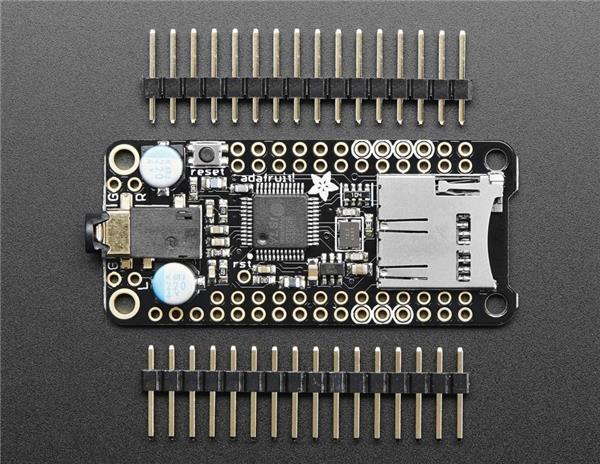
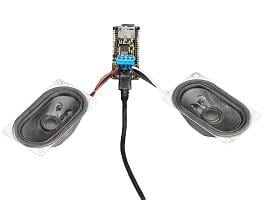
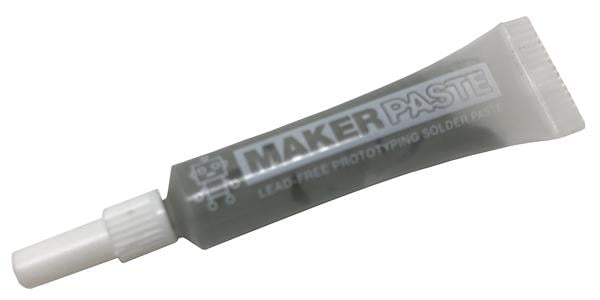

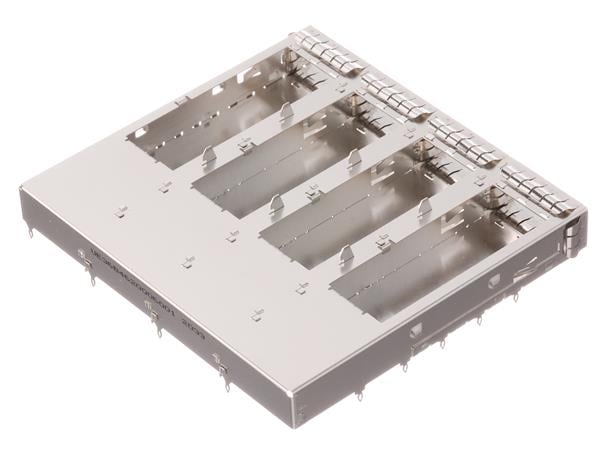



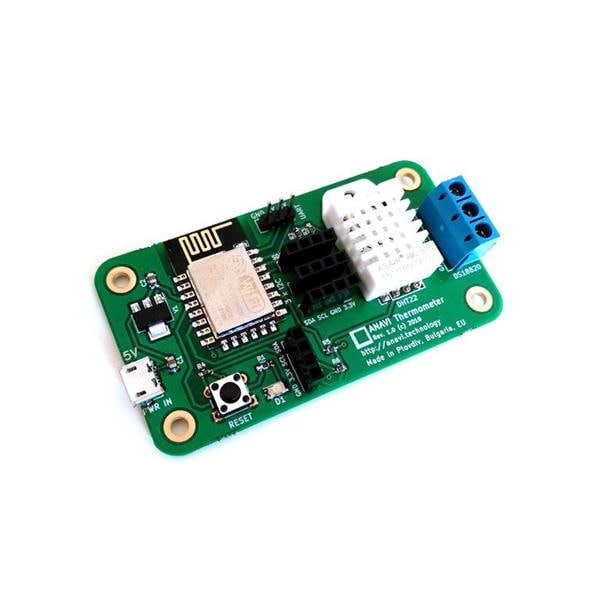
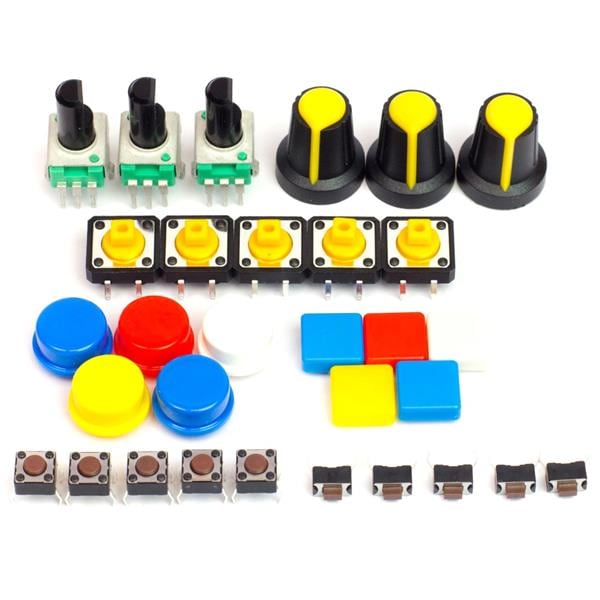
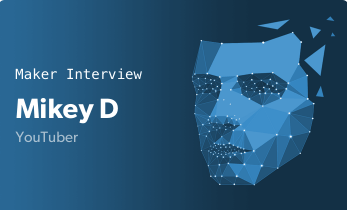
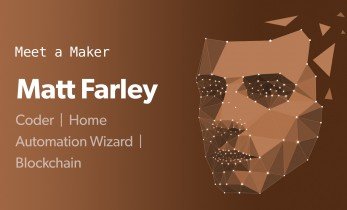

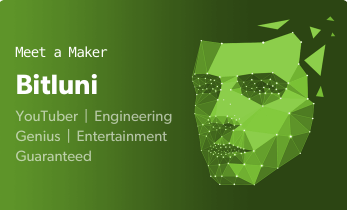

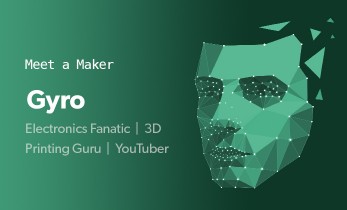

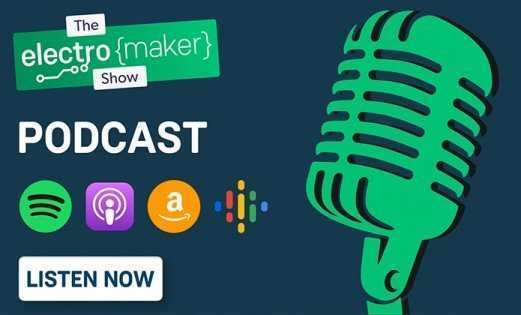

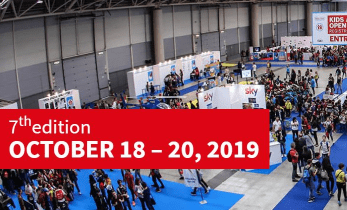
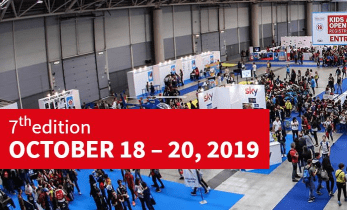
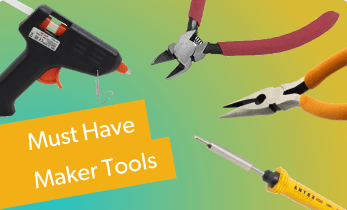

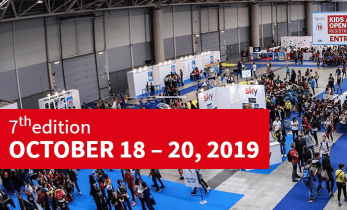
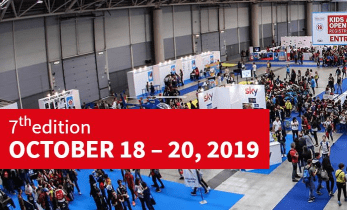

Leave your feedback...